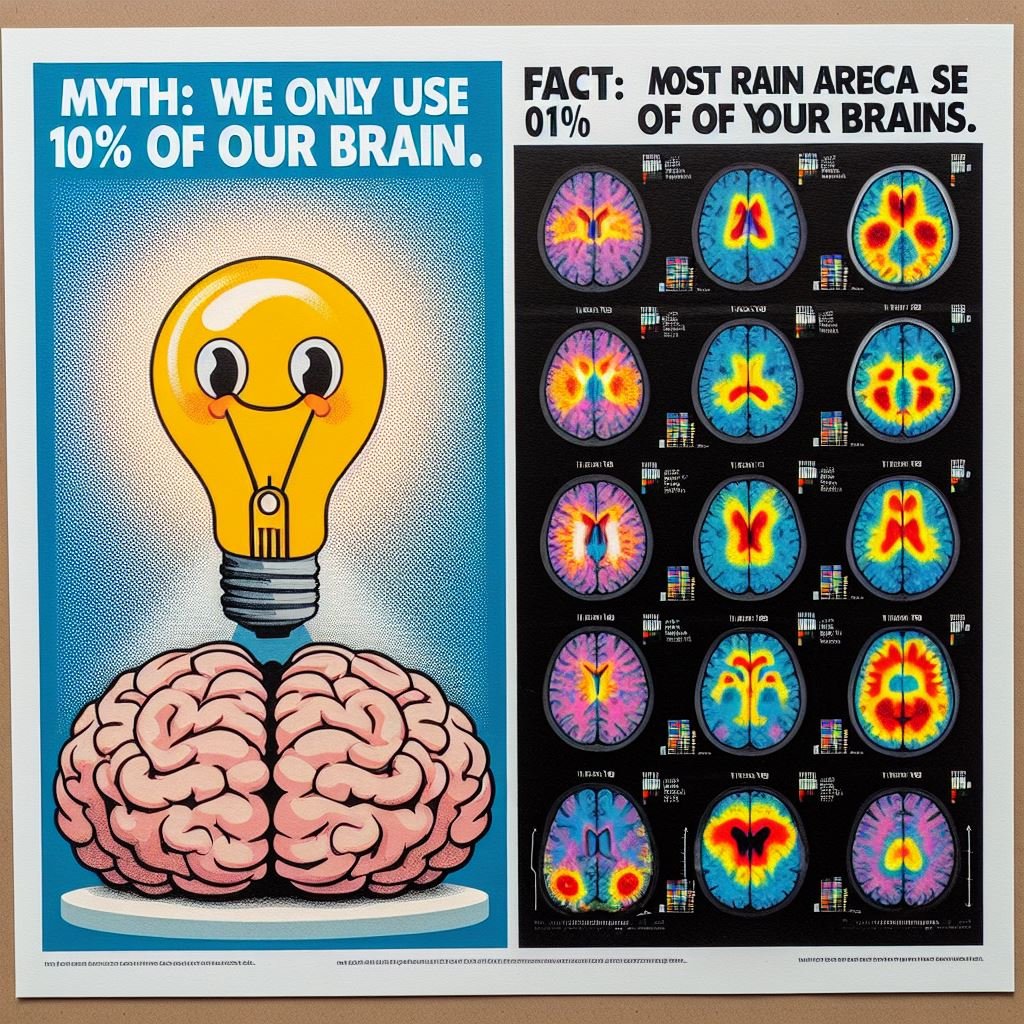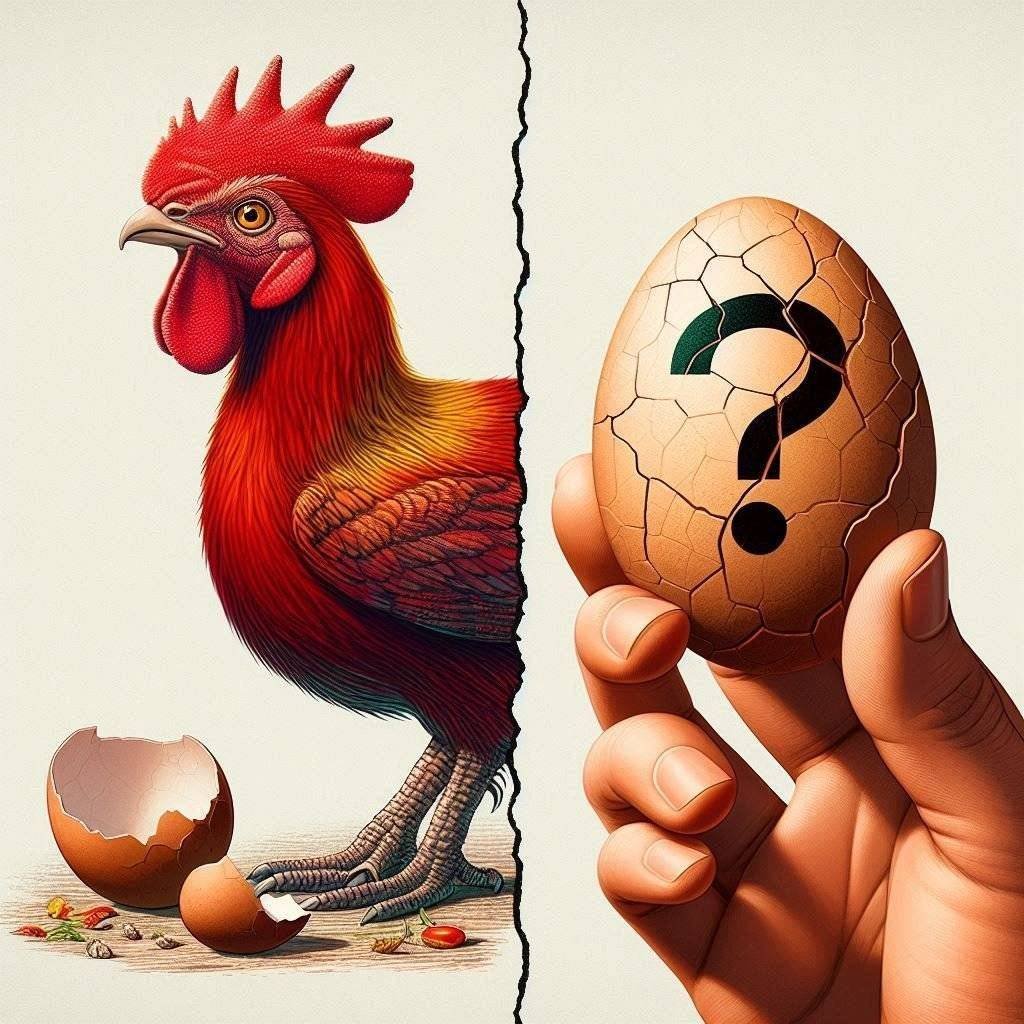Science is a powerful tool for understanding the world, but even in this age of information, misconceptions and myths persist. These myths can cloud our judgment and prevent us from appreciating the true wonders of science. Today, we’ll delve into the realm of the human body, debunking seven mind-blowing science myths you might not have realized were false.
Myth #1: We Only Use 10% of Our Brains
This pervasive myth has been around for well over a century, often used to explain away our perceived limitations or untapped potential. However, advancements in brain imaging like PET scans and fMRI paint a different picture. These technologies reveal that most areas of the brain are active throughout the day, albeit at varying levels. Different tasks activate specific regions – the visual cortex lights up when you see, the motor cortex when you move. While some areas might be less active at any given moment, the entire brain plays a crucial role in our functioning, constantly working behind the scenes to keep us alive and conscious.
Myth #2: Sugar Makes Kids Hyperactive
Many parents swear by the “sugar rush” phenomenon, blaming sugary treats for their children’s bursts of energy. While sugar does provide readily available energy (calories), research suggests the link between sugar and hyperactivity is weak at best. Several studies have failed to find a conclusive connection between sugar intake and increased activity levels in children. Behavior is a complex interplay of factors, including sleep patterns, overall diet, and the environment. A tired child might seem sluggish regardless of sugar intake, while a well-rested child may bounce around even without sugary snacks.
Myth #3: Lightning Never Strikes the Same Place Twice
This saying, often used metaphorically to imply something unlikely to happen again, doesn’t hold true in the world of lightning. The reality is that tall structures like buildings, trees, or even people in open fields act as lightning rods. They provide the easiest path for the electrical current to reach the ground, making them more likely to be struck repeatedly during thunderstorms. The Empire State Building in New York City, for instance, is struck by lightning an average of 23 times per year!
Myth #4: Your Tongue is a Flavor Map
Many of us grew up learning about different taste zones on the tongue – sweet on the tip, sour on the sides, bitter at the back. However, this concept is a simplification. While taste buds are indeed concentrated in specific areas of the tongue, they are not limited to single flavors. All taste buds are capable of detecting all five basic tastes: sweet, sour, salty, bitter, and umami (savory). The perception of different flavors arises from a combination of taste and smell. The olfactory receptors in our nose play a crucial role in distinguishing flavors, which is why food often loses its taste when we have a stuffy nose.
Myth #5: Microwaves Cook Food from the Inside Out
Microwaves are often demonized for supposedly zapping food from the inside out, destroying nutrients in the process. But the science behind microwave cooking tells a different story. Microwaves don’t directly heat food; instead, they interact with water molecules present in the food. These molecules vibrate rapidly when exposed to microwave radiation, generating heat. This heat then transfers throughout the food, just like in conventional cooking methods, although it tends to cook food from the outside in. While microwaving might affect certain nutrients to a slight degree compared to other cooking methods, it’s still a safe and convenient way to prepare meals.
Myth #6: We Can’t Smell in Space
Space is a vast and mostly airless environment, so the traditional way we smell – by detecting odor molecules carried by air – wouldn’t work. However, astronauts have reported experiencing phantosmia, or the perception of smells in the absence of any actual odor. The reasons behind this phenomenon are still under investigation. Some theories suggest that residual odors from food or materials used in the spacecraft linger and are occasionally detected by astronauts. Another possibility involves the microgravity environment affecting the astronauts’ olfactory system, leading to phantom smells.
Myth #7: Humans Evolved Directly from Chimpanzees
This is a common misconception about the theory of evolution. Humans and chimpanzees are indeed close relatives, sharing a common ancestor that lived millions of years ago. However, evolution doesn’t work in a linear fashion where one species directly becomes another. Over time, the common ancestor diverged into two separate lineages – one leading to modern chimpanzees and the other leading to humans. Both lineages continued to evolve independently, acquiring their own unique characteristics.
Debunking these myths allows us to appreciate the intricate workings of the human body and the fascinating story of our evolution. Science is a continuous exploration, and as we learn more, our understanding of the human brain, behavior, and the natural world around us continues to evolve. These debunked myths highlight the importance of critical thinking and seeking reliable sources of information. The human body is a complex marvel, and the brain, a powerful and still-mysterious organ. The connection between sugar and hyperactivity in children requires further exploration, while the intricate dance between taste buds and smell unlocks a deeper appreciation of the sensory experience of food.
Lightning’s unpredictable nature and the power of physics remind us of the forces at play in our environment. Understanding how taste buds and smell work together reveals the interconnectedness of our senses. Microwave technology, while not without its limitations, offers a convenient and safe option for food preparation. The experience of phantosmia in space piques our curiosity about the human body’s adaptability in extreme environments. Finally, appreciating the evolutionary relationship between humans and chimpanzees underscores the remarkable diversity of life on Earth.
Science is a journey of discovery, and debunking myths is an essential part of that process. By questioning assumptions and seeking evidence-based explanations, we can cultivate a deeper understanding of ourselves and the world we inhabit. So, the next time you hear a science-related claim, don’t hesitate to ask questions and explore the facts. The human mind is a powerful tool, and by embracing scientific inquiry, we can unlock its full potential.



